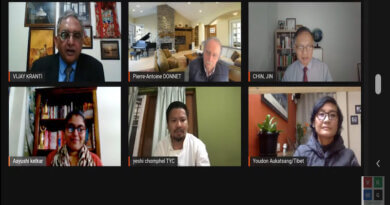Uttarakhand Set to Implement Tibetan Rehabilitation Policy 2014
By Tsering Choephel

DHARAMSALA, 16 Oct: The state government of Uttarakhand has directed all its departments to submit reports on the Tibetan Rehabilitation Policy (TRP) 2014 within a week, initiating the implementation process, as reported by The Times of India on 12 October.
Radha Raturi, Additional Chief Secretary (ACS) of Uttarakhand, a state in northern India issued the instructions during a meeting held in the secretariat on Tuesday evening. She has said that the state government had received this directive from the Union Ministry of Home Affairs (MHA).
Speaking to TOI, Dhondup Gyalpo, a Tibetan welfare officer in Dehradun expressed optimism saying “It is an extremely important move for us. We have been demanding help for basic facilities like proper roads and infrastructure in our settlement which will now be possible.”
Gyalpo also highlighted the limited job opportunities for Tibetans, restricting their involvement in long-standing practices like the winter sweater-selling businesses or opening eateries.”If our children get the benefits of government schemes, the entire community will get benefitted,” he added.
The Government of India formalised the Tibetan Rehabilitation Policy in October 2014 with the aim of providing a uniform policy guideline for all states in India where Tibetan refugees reside. Karnataka, Himachal Pradesh, and Uttarakhand adopted the policy in 2015, followed by Arunachal Pradesh in 2017.
The TRP 2014 guidelines urged state governments to extend both state and central schemes and provisions, such as MNREGS, PDS, NFSA, and others, applicable to Tibetans. Additionally, it stated that the state government should sign a lease document for the land occupied by Tibetans for a period of 20 years or until it is revoked or cancelled.
Furthermore, the policy instructed state governments to provide concrete support in basic amenities and infrastructure facilities, including roads, electrification, drinking water, and medical facilities in and around Tibetan settlements.
The policy is expected to alleviate various obstacles faced by Tibetans as stateless refugees, including issues related to birth certificates, land ownership disputes, job prospects in various sectors, and others.
Approximately 10,000 Tibetans live in six major Tibetan Settlements and four scattered Tibetan Communities in Uttarakhand State.






